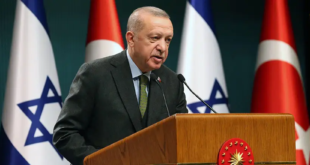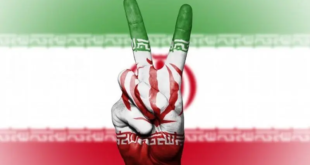Iraq’s Air Force should have 50 to 60 helicopters by the end of the year, including 28 new Russian aircraft, Iraq’s defence minister said on Saturday as he inspected two refitted Vietnam-era Huey helicopters in Baghdad.Rebuilding Iraq’s armed forces is a key plank of U.S. policy as Washington seeks to hand over responsibility for security so it can start to reduce its troop numbers four years after the invasion. But lack of equipment has plagued the process and the Air Force in particular has had to be rebuilt from scratch.
The Hueys, the workhorse of the U.S. army in the 1970s, are part of an initial shipment of five donated by Jordan and refitted with modern avionics and new engines in the United States at a cost of $3.5 million each, funded by Washington.
Jordan has donated 16 Hueys in all, with the remainder due to arrive by July. The aircraft date from the 1960s and 1970s and were originally a gift to Jordan from the United States.
But U.S. officials balk at the term “third-hand”, saying almost every major part except the control stick is brand new.
“The only thing that just got repainted is the stick,” said Lieutenant Colonel Steve Hardy of the U.S. Air Force.
After the refit, the helicopters are upgraded to UH-1H “Huey II” and the clock is restarted on flight records to show zero hours of flight time. The first five were delivered in February.
The $3.5 million cost to refit a 35-year-old Huey compares to $5.9 million for a new Black Hawk configured for the U.S. Army or $5.5 million to $7.5 million for a new Russian MI-17, depending on the configuration, U.S. officials said.
“This is like a new aircraft, a new helicopter, with new systems and high power,” said Brigadier General Mohammed Shati, a pilot who flew one of the Hueys from their base in Taji.
JUST THE BEGINNING
Iraqi pilots fly with U.S. co-pilots because they have not had time to become fully recertified yet, U.S. officials said, adding that they should be able to fly alone within 60 days.
Shati said he had been flying since 1975, but he declined to talk about his past experience in Saddam Hussein’s Air Force.
After a decade of sanctions and a U.S.-imposed no-fly zone over much of the country, Iraq’s pilots are mostly over 40 and there is no base of new young pilots for the future.
But Defence Minister General Abdel Qader Jassim al-Ubeidi said future pilots were being trained abroad and in Iraq.
Training is already under way at Taji, just north of Baghdad and the Air Force has around 1,000 personnel, including 100 pilots, as well as three C-130 transport planes donated by the United States and 10 two-seater reconnaissance planes.
Iraq’s Air Force was once the envy of its Arab neighbours, with hundreds of Russian fighter jets, particularly during the war with Iran in the 1980s, but no jets remain in service.
Asked when the Air Force would have fighter jets, Ubeidi said: “We are planning for that in 2008.”
He declined to say whether U.S, Russian or other makers might win lucrative contracts to supply them.
The Air Force already has three Bell Jet Rangers — small helicopters used for training — and 10 Russian MI-17s. Ubeidi said the number of MI-17s would hit 28 next month and by the end of 2007, it should have between 50 and 60 helicopters in all.
“This is the beginning and we’re very happy about it,” Ubeidi said before taking a short flight in a Huey over the heavily fortified international Green Zone in central Baghdad.
The Hueys are outfitted with Kevlar armour and anti-rocket systems but on another demonstration flight carrying reporters, they stayed within the Green Zone, beyond the reach of gunmen who have downed eight U.S. helicopters in Iraq since Jan. 20.
 Eurasia Press & News
Eurasia Press & News



